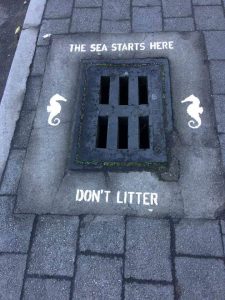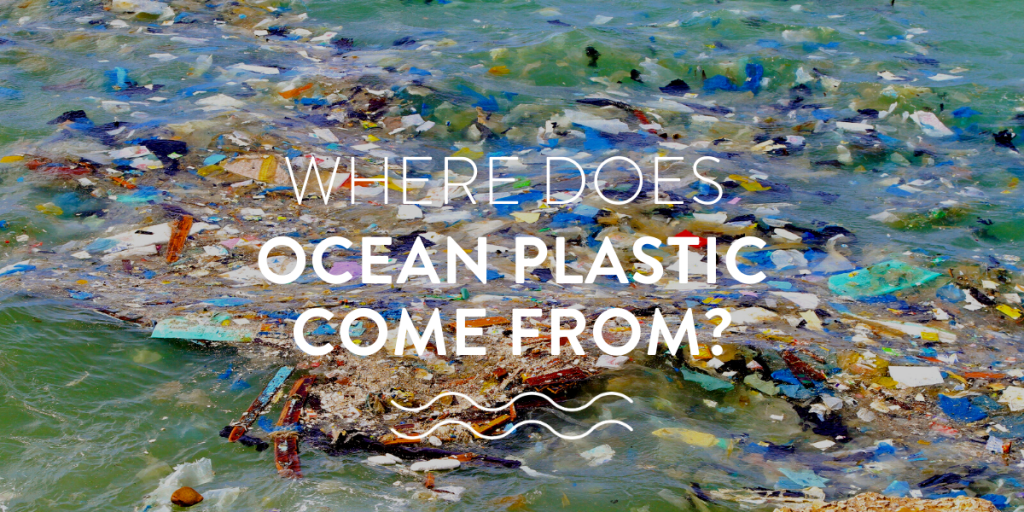It’s pretty obvious that plastic is a problem, especially for our oceans and marine life, but do you know where ocean plastic actually comes from?
80% of marine debris comes from the land, with the remaining 20% attributed to disposal or loss of rubbish / goods at sea. This shows what an impact our land based everyday life has on the oceans.
Of all marine debris it’s estimated that over 80% is plastic (from bottles to fishing gear, to name a few of the big culprits). This ocean plastic is of particular concern as, it lasts for a very long time in marine environments, presents both physical and chemical hazards and is frequently mistaken for food by birds and marine life. Ocean plastic has been documented throughout the water column, including on the sea floor of nearly every ocean and sea. With amounts increasing in line with trends in plastic production – so unfortunately on the up!
This video is something we found a long time ago now, but still a good summary of the problem:
4 ways plastic enters the ocean:
Littering
Litter dropped on the ground doesn’t stay put. Rainwater and wind carry that litter down drains. Drains lead to the ocean! Due to a lack of awareness and general lack of waste collection or recycling infrastructure in many parts of the world, littering is an enormous issue. Even where there is infrastructure, unfortunately this is still a huge problem, with cigarette butts and on the go items (e.g. drink bottles, cups, bags) being some of the most common items found washed up on our shores.
Industrial leakage and the dumping of rubbish also plays a huge part in the ocean plastic problem. For example nearly 50% of the great pacific garbage patch is made up of ghost gear / fishing nets. Another example is Nurdles, a key component of plastic production, being found washed up on beaches all over the world.

Driving
It’s not just the fumes from vehicles that are causing issues, it’s the tyres and break pads too. A recent study has shown that more than 200,000 tonnes of tiny plastic particles are blown from roads into the oceans every year. To help visualise that’s about 1,300 blue whales!
Airborne transport of plastic has received a lot less attention compared to rivers and other methods so far. This is because the size of the particles in question makes them so difficult to identify. However, it is important to address this issue as this study suggests it’s responsible for more ocean plastic than rivers (which is usually the most heavily discussed).
Binning rather than recycling
Quite obviously, plastic that you bin ends up in landfill. Irrespective of any wider health or environmental concerns around landfill sites, when in transit plastic waste is often lost into the environment. As is so lightweight it is blown away to make its way into drains, rivers and the ocean.
The volume of waste being transported to countries that don’t always have the capability or capacity to deal with it properly is also increasingly coming to light. This means large volumes of plastic waste is being disposed of incorrectly and ending up in our oceans.
Drains and Laundry
Many products we use on a daily basis are flushed down the toilet (e.g. wipes or sanitary products) or make their way down the drain (e.g. microbeads in cosmetics). Even washing your clothes could be contributing to ocean plastic! This is because clothes shed microfibres when washed, if your clothes are synthetic then these will be plastic microfibres.
Read: The Problem with Microfibres for more on this and what you can do to limit your impact.
So, it’s pretty clear the main way plastic ends up in the ocean is us! Whether we mean to litter or not and even when we have the best intentions plastic often still ends up in the ocean. Basically to end ocean plastic we need to stop our reliance on plastic overall.
We all know the mantra: Reduce, Reuse and (as a last resort) Recycle!



